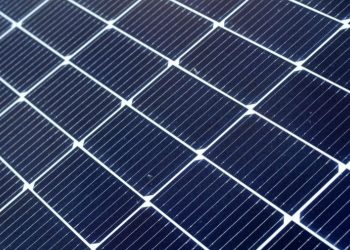Between the passing of the new Massachusetts Climate Bill and the Biden Administration’s focus on transitioning to clean renewable energy, there’s been a lot of discussions lately around revamping building codes to incorporate green design practices and construct high-performing buildings– and rightfully so.
Buildings are one of the biggest contributors to greenhouse gas emissions. In fact, in 2019, U.S. commercial and residential buildings produced over 13% of the country’s greenhouse gas emissions. Keep in mind, that number doesn’t include all of the additional emissions contributed by the industry and electricity sectors. Now, with temperatures rising, growing concern about climate change and natural disasters, Massachusetts made the commitment to reach net-zero carbon emissions by 2050, but that won’t happen overnight.
Everyone from commercial property owners to school board members to town planners will need to begin changing up the way they construct and renovate structures to meet new building codes.
What Exactly Are High-Performing Buildings?
High Performing Buildings are built with sustainability in mind. These constructions aim to transition away from the use of traditional fossil fuels, focus on energy efficiency, and reduce energy consumption and waste overall – all while offering comfortable, safe, and healthy environments for those who occupy these buildings.
High Performing Buildings are designated based on their energy use intensity (EUI). Essentially, EUI measures a building’s energy performance and is calculated by dividing a building’s annual energy consumption per square foot of space. Generally, some buildings, like hospitals and data centers, are predisposed to consume a great deal of energy, and therefore have a high EUI. Other buildings, like small offices and banks, don’t use as much energy and have a low EUI.
It’s not just about size and energy consumption – it’s how efficiently the building runs. Buildings that consume electricity from renewable energy sources, incorporate energy efficiency practices and have onsite renewable energy generation that can be sent to the grid have lower EUIs.
In other words, the lower the EUI, the higher-performing the building and the less carbon emitted into the environment.
Benefits of High-Performing Buildings
Achieving the state’s goals and meeting new energy requirements is important, but there are also incredibly compelling financial, cultural, and environmental reasons to ensure that buildings are high-performing.
Here are some of the leading benefits that High Performing Buildings offer:
Financial: It Pays to Go Green
-
Both the state and the federal government award generous incentives and tax credits to those who construct green buildings.
-
There are long-term savings in energy and operating costs.
-
Green design and onsite renewable energy can increase a building’s valuation and marketability.
-
Higher cap rate in the real estate market.
-
As time goes on, increasing environmental restrictions will be placed on inefficient buildings, costing stakeholders time and money.
Sustainability: Better Buildings Make for Better Workplaces
-
Aligns your efforts with state and federal climate goals.
-
Creates healthy and comfortable environments for occupants, whether they are employees, tenants, visitors, students, or staff.
-
Makes your organization and building more attractive to prospective talent and customers.
Resiliency: More Durable, Safer, and Longer-Lasting
-
Safer and more secure environments.
-
Better protection against power disruption and intense weather events.
-
Mitigates risk and enables the building to run more efficiently and cost-effectively.
-
Building codes have become stricter, especially in Massachusetts, to upgrade our building stock to become more efficient and higher performing.
Getting Started
Whether you are designing and constructing a new building, renovating an existing one, or simply trying to make your current location more energy efficient, there are proven strategies that you can implement today to incorporate sustainable design practices, such as:
-
Work with your team to establish an energy plan and goals early in the process.
-
Take advantage of federal and state incentives to offset upfront capital costs.
-
Incorporate onsite renewable energy generation, like solar, to save money on electricity and reduce carbon emissions.
-
Reduce demand charges and participate in demand response programs with energy storage systems.
-
Leverage best practices by architects and developers who have proven success in green design practices.
High Performance has become the standard when it comes to design, construction, and operations for the commercial building market. New building codes are already being implemented and the demand for energy efficiency in businesses, work, and school environments is only going to grow, so getting started early is imperative. When it comes to designing high-performing, energy-efficient buildings, it helps to have an experienced electric energy partner that you can trust.
Curious to know how high-performing your building is – or can be by incorporating renewable energy? Contact Solect Energy today to get a professional evaluation of your site.


















